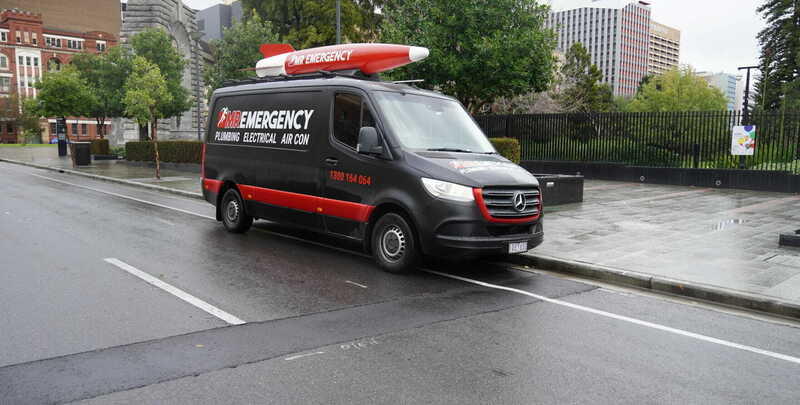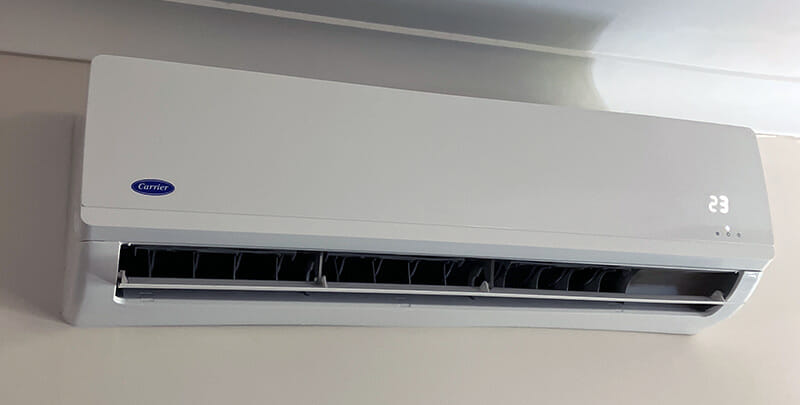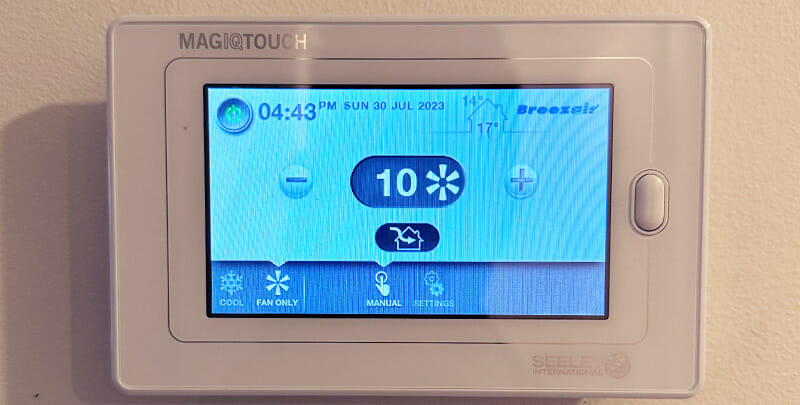
Air Conditioners – A Modern Marvel in Climate Control
Ever wondered how air conditioning systems deliver cool and refreshing air to combat the sweltering heat of summer? Curious about the proper installation and maintenance of your AC unit during summer?
Air conditioners have become a modern marvel, transforming how we experience comfort indoors.
This article will explore the secrets behind this remarkable technology and the intricate process that allows air conditioning systems to transform warm air into a cool and comfortable oasis.
So, let’s dive in and uncover the inner workings of air conditioners.
The Basics of Air Conditioning
To understand how air conditioners work, we must start with the fundamental principles of thermodynamics. The basic concept is that heat naturally flows from high-temperature to low-temperature areas.
Air conditioning systems harness this principle to remove heat from indoor spaces and expel it outside, leaving us with cool and pleasant air.
The Components of an Air Conditioning System
An air conditioner comprises several essential components that work together to provide the cooling effect we enjoy. Let’s explore each of these components in more detail:
Evaporator Coil
The evaporator coil is typically located indoors and is responsible for absorbing heat from the surrounding air. It consists of a network of coils through which a cold refrigerant circulates.
As warm air passes over the evaporator coil, the refrigerant absorbs the heat from the air, causing the refrigerant to evaporate from a liquid to a gas.
Condenser Coil
The condenser coil is located in the outdoor unit of the air conditioning system. It acts as the heat exchanger that releases the absorbed heat from the indoor air to the outside environment.
As the high-pressure refrigerant gas flows through the condenser coil, it dissipates the heat absorbed, causing the refrigerant to condense into a liquid state.

Compressor Unit
The compressor is often called the heart of an air conditioning system. It is responsible for pressurizing the refrigerant gas, which increases its temperature.
Compressing the refrigerant, the compressor boosts its energy level, allowing it to release heat more efficiently in the condenser coil.
Expansion Valve
The expansion valve is a small device between the evaporator and condenser coils. Its primary function is to regulate the flow of the refrigerant and control its pressure.
By reducing the pressure of the refrigerant, the expansion valve enables the refrigerant to expand and cool down as it enters the evaporator coil.
Refrigerant
The refrigerant is a specialised fluid with excellent heat-absorbing and heat-releasing properties. It undergoes phase changes from a cool liquid to a low-pressure gas and back to a liquid during air conditioning.
Commonly used refrigerants include hydrofluorocarbons (HFCs) such as R-410A and R-134a, which have replaced ozone-depleting substances like chlorofluorocarbons (CFCs) and hydrochlorofluorocarbons (HCFCs).
These components work harmoniously to facilitate heat transfer, absorbing heat from the indoor air and releasing it outside, ultimately providing cool and comfortable air for your indoor space.
It’s important to note that these components’ specific configuration and arrangement may vary depending on the type of air conditioning system, such as central air conditioners, ductless mini-split systems, or window units.
The Air Conditioning Process
The air conditioning process removes heat from indoor spaces and delivers cool and comfortable air. Let’s explore the air conditioning process in detail:
- Air intake: The process begins with warm air being drawn into the air conditioning system from the indoor space through vents or return ducts. This warm air contains heat energy that needs to be removed to create a cooling effect.
- Cooling medium: The cooling medium in an air conditioning system is a refrigerant, a special fluid with excellent heat-absorbing properties. The refrigerant is circulated throughout the system and plays a crucial role in transferring heat from the indoor air to the outside environment.
- Evaporator coil: The warm air from the indoor space enters the evaporator coil, typically located inside the air conditioning unit or in the indoor unit of a split system. The evaporator coil contains the cold refrigerant, and as the warm air passes over it, it absorbs heat from the air.
- Heat absorption: Heat is transferred from the air to the refrigerant as the warm air comes into contact with the cold evaporator coil. This heat transfer process causes the refrigerant to evaporate from a cool liquid to a low-pressure gas, effectively absorbing the heat energy from the indoor air.
- Compressor: The low-pressure gas refrigerant is then drawn into the compressor, which is usually located in the outdoor unit of the air conditioning system. The compressor plays a vital role in air conditioning by compressing the refrigerant gas, increasing its temperature and pressure.
- Condenser coil: The high-pressure, high-temperature refrigerant gas then flows into the condenser coil in the outdoor unit. The condenser coil acts as a heat exchanger, releasing the heat absorbed from the indoor air to the surrounding outdoor air.
- Heat rejection: As the refrigerant releases heat to the outside air, it condenses back into a cool liquid state due to the high pressure and temperature. This heat rejection process allows the refrigerant to release the heat it absorbed from the indoor air, making it ready to repeat the cycle.
- Expansion valve: The cool liquid refrigerant then passes through an expansion valve, which regulates the flow of the refrigerant into the evaporator coil. The expansion valve reduces the pressure and temperature of the refrigerant, preparing it for the next cycle of heat absorption.
- Air circulation: Simultaneously, a fan blows air over the cold evaporator coil, where the refrigerant has absorbed heat from the indoor air. The cooled air is then distributed through the air ducts or vents, circulating throughout the indoor space and providing a refreshing breeze.
- Thermostat and control: The air conditioning system is typically equipped with a thermostat that monitors the temperature of the indoor space. Once the desired temperature is reached, the thermostat signals the system to cycle off temporarily until the temperature rises again, maintaining a comfortable and consistent environment.

Different Types of Air Conditioning Systems
Air conditioning systems come in various types, each designed to suit different needs and environments. Here are some of the most common air conditioning systems:
Ducted Air Conditioners
Ducted air conditioners (or central heating and cooling) are widely used in homes and commercial buildings. They have two main components: an indoor unit, typically installed in the basement or utility room, and an outdoor unit.
Central air conditioners use a system of ducts to distribute cooled air throughout the building. They can cool multiple rooms or an entire building from a single centralised system.
Ductless Mini-Split Systems
A ductless mini-split air conditioner, also known as a ductless air conditioner or heat pump, is an excellent option for homes without ductwork or for individual room cooling. They consist of an outdoor unit and one or more indoor units mounted on walls or ceilings.
These systems provide independent temperature control for each indoor unit, allowing for personalised comfort in different home areas.
Window Air Conditioners
Window air conditioners are self-contained units installed in a window or a specially designed opening in a wall. They are popular for single-room cooling and relatively easy to install. Window air conditioners are affordable and provide efficient cooling for smaller spaces such as bedrooms or living rooms.
Portable Air Conditioners
Portable air conditioners offer flexibility as they can be moved from one room to another. They typically consist of a self-contained unit on wheels that exhaust hot air through a window or a vent. Portable air conditioners are suitable for cooling specific areas or spaces where of a permanent system is not possible or practical.
Packaged Terminal Air Conditioners (PTAC)
PTAC units are commonly found in hotels, apartments, and commercial spaces. They are self-contained units installed through an exterior wall, typically below a window. PTAC units provide heating and cooling capabilities and are controlled individually for each room or living space.
Split System Air Conditioners
Split system air conditioners, as the name suggests, are divided into two main units: an indoor unit and an outdoor unit. The indoor unit contains the evaporator coil, usually mounted on a wall or suspended from the ceiling.
The outdoor unit houses the condenser coil and compressor. A split system air conditioner is versatile for cooling individual rooms or multiple zones, allowing for energy-efficient temperature control.
These systems are usually reverse cycle air conditioners, providing you with cool air in summer and warm air in the chilly winter months.
Multi-Head Split Air Conditioning Systems
Multi-head split systems are similar to split system air conditioners but allow multiple indoor units to be connected to a single outdoor unit. This configuration provides the flexibility to cool multiple rooms or zones independently, each with its temperature control. Multi-split systems are ideal for buildings where individualised comfort in different areas is desired.
Hybrid Air Conditioning Systems
A hybrid air conditioner combines traditional cooling methods, such as air conditioning compressors, with alternative technologies like geothermal heat pumps or solar power. These systems are designed to optimise energy efficiency by using renewable energy sources and reducing reliance on fossil fuels.
Choosing the right type of air conditioning system depends on the size of the space, the number of rooms to be cooled, budget, existing infrastructure, and personal preferences.
Consulting with a heating, ventilation and air conditioning (HVAC) professional can help determine the most suitable system for your needs and expert installations, ensuring efficient and comfortable cooling throughout your home or building.
Trust Mr Emergency for Air Conditioning Installation and Maintenance Services
Understanding how an air conditioner works is key to enjoying optimal cool comfort in your home or office.
At Mr Emergency, we strive to provide valuable insights into the inner workings of air conditioning systems. We’ve unveiled the secrets behind cool air from the evaporator to the condenser coil.
From split system air conditioners to ducted systems or even a portable air conditioner, we can help you find the right air conditioner for your home. And we have the expertise the recommend the best air conditioner brand to suit your needs.
Contact Mr Emergency’s expert team for top-notch installation and maintenance services, ensuring your air conditioning units operate efficiently and reliably.
Please note: This information is provided for advice purposes only. Regulations differ from state to state, so please consult your local authorities or an industry professional before proceeding with any work. See our Terms & Conditions here.


